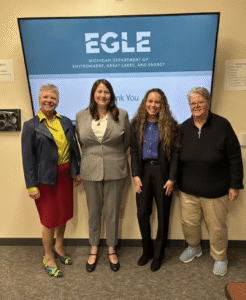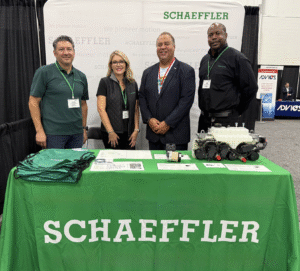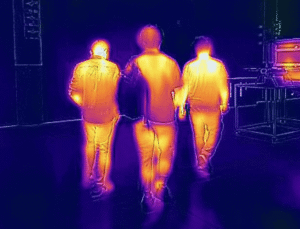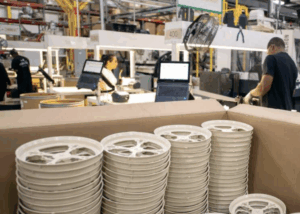
- Kim Kisner
- Business
- 09/09/2024
BorgWarner’s Path to Carbon Neutrality
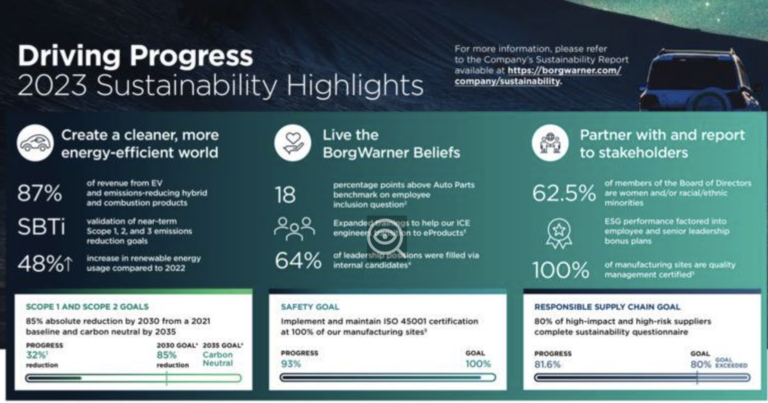
BorgWarner is a global automotive supplier that delivers mobility products to the market including turbochargers, electric transmissions, lithium iron phosphate (LFP) batteries, thermal management solutions, and more. Headquartered in Auburn Hills, Mich., BorgWarner operates in 21 countries with 82 locations and 40,000 employees.
We interviewed Dr. Volker Wang, BorgWarner’s president and general manager of Turbos and Thermal Technologies, about the company’s work to reduce the company’s carbon footprint across several initiatives.
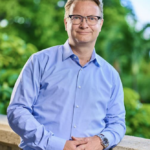
Q: Given the sheer magnitude of your operations, how are sustainability practices translated and executed toward the goal of a 35% reduction in Energy Intensity?
A: To be clear, BorgWarner doesn’t have an energy intensity reduction goal set. We have absolute GHG reduction goals. We’ve set specific sustainability goals to become carbon neutral by 2035 for Scope 1 and 2 emissions. We aim for an 85% reduction by 2030, based on our 2021 baseline, and a 25% reduction for Scope 3 emissions, based on our 2021 baseline.
There are several initiatives in place to achieve this.
First, we’ve developed a decarbonization toolbox that provides tailored recommendations to our facility leaders on reducing CO2 emissions. This toolbox is adaptable to different regions and processes, helping reduce energy use and identify opportunities for renewable energy generation.
We’ve implemented smart metering across our facilities to measure real-time consumption of natural gas and electricity. This allows us to track energy usage more accurately and make necessary adjustments to meet our goals.
We’ve integrated CO2 reduction and sustainability targets into our bonus and incentive system.
To gauge our sustainability performance, BorgWarner conducts materiality assessments based on feedback from various stakeholders and aligns its efforts with global ESG reporting initiatives, such as those from the AIAG (Automotive Industry Action Group).
The company operates in a decentralized manner, empowering its global locations to make decisions and act on sustainability priorities that align with local needs.
Q: What are the biggest challenges?
A: The company has set clear sustainability targets and has mechanisms in place to support the achievement of those targets. However, even with the best-laid plans and intentions, we cannot predict or control the future. Many variables in play could alter circumstances, all around the world. That’s why it’s imperative to remain agile and flexible.
Q: How do you measure and manage your supply chain’s carbon footprint and ensure compliance regarding their efforts around sustainability?
A: In March we partnered with Manufacture 2030 – a decarbonization software provider. We use M2030 to track and manage our supplier’s CO2 emissions. Our suppliers use the software to report their emissions to us and gain access to best practices on how to reduce emissions. This tool is essential for monitoring and managing our suppliers’ progress.
We incentivize our suppliers to set emissions reduction targets for themselves and their supply base by assigning points on our supplier scorecard, which is a major factor in deciding which suppliers are awarded business.
Q: How does sustainability impact product design?
A: This is an important question. There is so much related to product design.
We are using software to show in real time to our designers what the CO2 footprint outcome will look like. This helps at the earliest stages to optimize the products.
Our Design for Sustainability workstream is actively working to build processes into our design protocols to ensure maximum use of green materials, where feasible.
Circularity is a big topic for us when it comes to battery packs and other materials. We look for second-life options in different applications.
In short, we are utilizing engineering-driven initiatives that help to reduce CO2 from our product designs.
Q: How is water management approached?
A: We approach it at the local level.
We conducted risk assessments in all of our facilities, and 14 are in the high or extremely high usage categories which is roughly 17% of our facilities worldwide, so we are putting initiatives in place where needed.
For example, one of our facilities in New York has implemented a reverse osmosis process to treat wastewater instead of using soft water. This change is expected to decrease water discharge by approximately 7,500 gallons per day.
Q: Are electric and hybrid vehicle sales growing at a pace that’s aligned with decarbonization goals?
A: It’s not a secret the industry’s transition to electric vehicles is not trending at the rate expected. The industry is undergoing an unprecedented time of change.
We provide a range of engines—combustion, hybrid, and electric—to meet our customers’ evolving needs during this transition. In 2023, 87% of our revenue was generated from EV and emissions-reducing combustion and hybrid products, including $2 billion in eProduct sales, marking a strong step forward toward decarbonization, though there’s still more ground to cover.
Q: What are best practices you think other automotive suppliers can employ?
A: It all starts with a mindset — focusing on doing what is right and addressing urgent challenges head-on. Taking real, tangible actions that drive improvements is far more impactful than simply producing reports.
One key tool for us has been the Decarbonization Toolbox, which offers practical strategies that have been instrumental in helping our facilities start their sustainability journey. I think it’s critical to implement the same improvements within operations that are expected from suppliers.
It has not been difficult to motivate our teams to participate. I think people want to be involved in this and they want to do the right thing. Seeing positive outcomes has motivated our employees to do more at a local level as well.
Be sure to subscribe to our newsletter for regular updates on sustainable business practices in and around Detroit.
Kim Kisner
- All
- Business
- Community
- Education
- Events
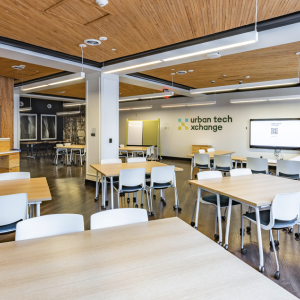
Now in its fourth year of operation, Urban Tech Xchange (UTX) has become a living laboratory where emerging technology startups can test, refine, and validate smart urban systems in real-world conditions. Launched through a collaboration between Bedrock, Bosch, Cisco, and Kode Labs, UTX builds on the foundation of the Detroit Smart Parking Lab (founded earlier by Bedrock, Ford, MEDC, and Bosch) expanding its scope beyond parking into logistics,...
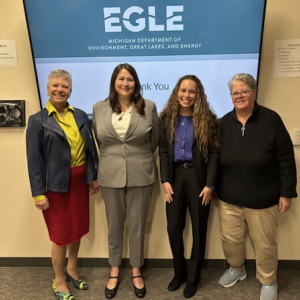
Butzel is one of Michigan’s longest-standing law firms, advising businesses across industries on regulatory compliance, environmental law, and complex commercial matters. As environmental expectations evolve alongside shifting regulatory realities, the firm plays a key role in helping companies navigate both legacy challenges and emerging risks. SBN Detroit interviewed Butzel shareholder Beth Gotthelf to discuss how environmental compliance, sustainability, and innovation are intersecting today — particularly in Southeast Michigan...

Schaeffler is a global automotive and industrial supplier with operations in Southeast Michigan, where it works across the region’s manufacturing and supplier network. As sustainability, decarbonization and supply chain resilience become central to how products are designed and sourced, the region’s role in shaping next-generation manufacturing continues to evolve. SBN Detroit interviewed Courtney Quenneville, who oversees supplier sustainability, to discuss the realities of sustainable sourcing, what decarbonizing a...


